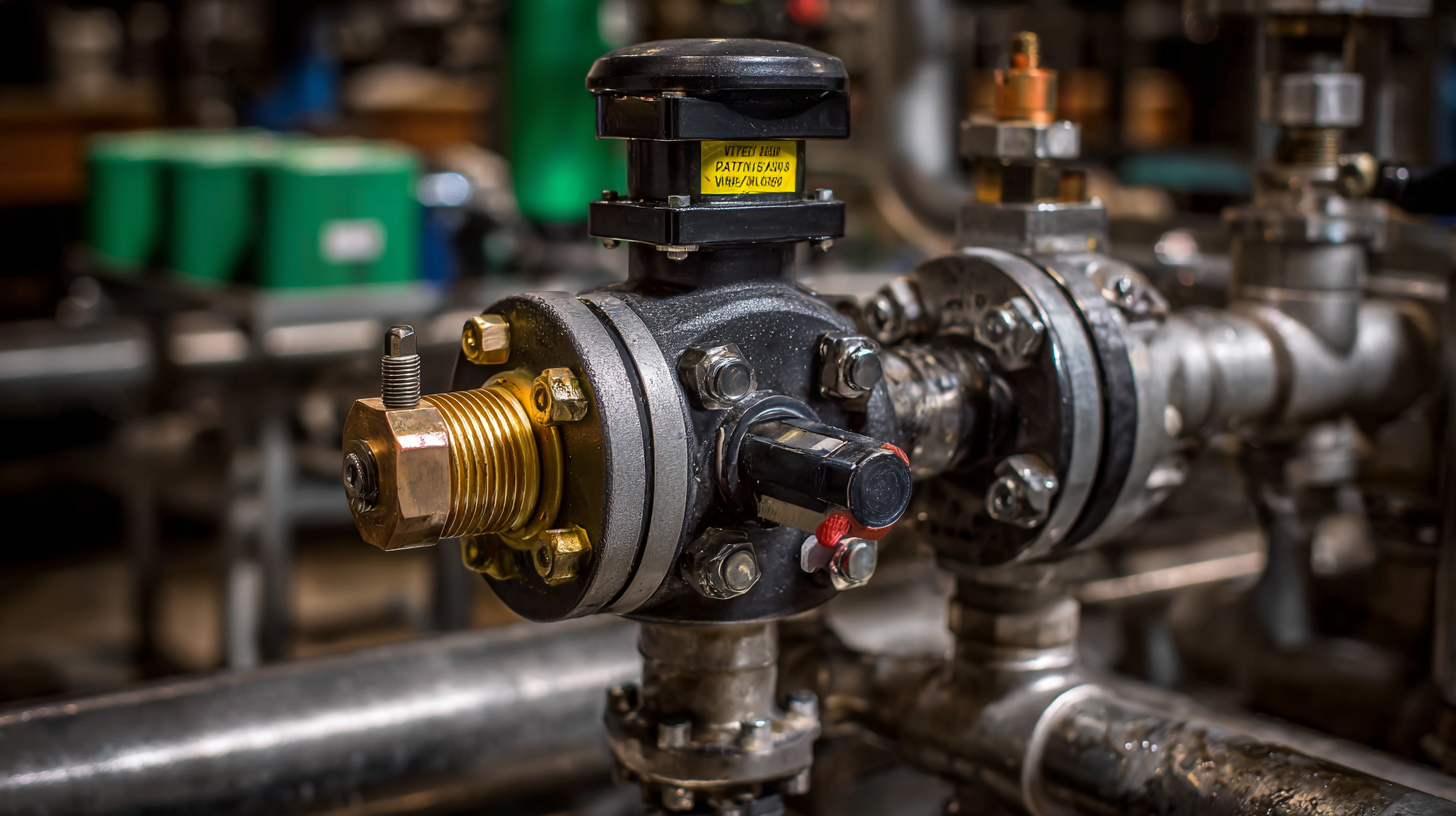In modern industrial and residential applications, the importance of effective water valve solutions cannot be overstated. According to a recent report by the International Water Association, the global demand for advanced water management systems is projected to rise significantly, with the water valve market anticipated to reach approximately $24 billion by 2025. However, traditional water valves often fall short in meeting the diverse needs of contemporary environments, leading to inefficiencies and increased operational costs. This necessitates a thorough exploration of unique alternatives that can address these challenges.

From smart flow control technologies to innovative materials that enhance durability and performance, the evolution of water valve solutions is critical in overcoming the limitations of conventional approaches. As we delve into the realm of modern applications, understanding these new alternatives will empower industries to optimize their systems and ensure sustainable water resource management.
In today's rapidly evolving industrial landscape, the demand for innovative water valve designs is becoming increasingly paramount. Traditional water valve solutions, characterized by their mechanical complexity and limited adaptability, are being challenged by new technologies. According to a recent report by MarketsandMarkets, the global smart water management market is expected to reach $29.6 billion by 2025, reflecting a growing inclination towards efficiency and automation in water management systems. This shift underscores the importance of integrating cutting-edge designs that cater to modern applications.
Emerging technologies such as IoT-enabled valves and automatic flow regulation systems are setting new standards in the industry. For instance, a study by the International Water Association highlights that smart water meters can reduce water loss by up to 25%, a significant improvement over conventional manual systems. Additionally, these innovative designs facilitate real-time monitoring and remote control, allowing for proactive maintenance which was previously difficult to achieve. By embracing these advanced alternatives, industries can not only enhance their operational efficiency but also contribute to sustainable water usage practices crucial in today's resource-constrained environment.
The rise of smart water valves is indicative of a broader trend in technology reshaping various applications, particularly in water management systems. This transformation is not only driven by the need for efficiency but also by the burgeoning market for advanced technologies. For instance, the global market size for MHealth applications is projected to expand from $40.65 billion in 2025 to $88.70 billion by 2032, marking a compound annual growth rate (CAGR) of 11.8%. Such growth in adjacent sectors illustrates the increasing integration of smart technologies across industries.
Furthermore, the growth of the blockchain technology market, anticipated to reach substantial figures across its various applications, highlights an underlying trend towards enhanced security, transparency, and automation. This includes digital identity management and smart contracts, which are essential components in the functioning of smart water systems. As the blockchain market continues to evolve, its implications for smart devices—like water valves—will likely facilitate more innovative and robust solutions for modern applications, setting a precedent for future technological advancements across the board.

In recent years, the importance of sustainable materials in water valve manufacturing has gained significant traction within the industry. According to a report by ResearchAndMarkets, the global eco-friendly valve market is projected to grow at a CAGR of 5.4% from 2021 to 2026, primarily driven by the increasing awareness of environmental impacts and regulations pushing for greener alternatives. Manufacturers are increasingly exploring materials such as recycled plastics, biopolymers, and even innovative composites made from natural fibers. These materials not only reduce the carbon footprint associated with traditional metal valve production but also offer comparable performance in terms of durability and reliability.

Furthermore, the shift towards eco-friendly alternatives extends beyond just materials. The adoption of advanced manufacturing techniques like 3D printing enables the creation of intricate valve designs that minimize waste during production. A study from the American Society of Civil Engineers highlights that embracing sustainable design not only enhances the efficiency of water distribution systems but also contributes to a significant reduction in operational costs over time. As industries strive for compliance with stringent environmental standards, the integration of sustainable practices in water valve solutions is becoming not only a necessity but also an opportunity for innovation and growth.
In today's rapidly evolving industrial landscape, standard water valves often fall short of meeting the increasingly complex demands of modern applications. This inadequacy drives the necessity for custom valve solutions that can cater to specific needs. Whether it's for unique materials, pressure requirements, or environmental conditions, businesses are beginning to recognize that one-size-fits-all approaches no longer suffice. Custom valves not only ensure optimal performance but also enhance safety and efficiency in operations.
Custom valve solutions offer flexibility and adaptability that standard options cannot match. For instance, industries dealing with corrosive substances or extreme temperatures require tailored materials and design modifications to ensure longevity and functionality. By collaborating closely with manufacturers, businesses can develop valves that are precisely engineered for their operational realities. This tailored approach not only mitigates risks associated with valve failure but also leads to significant long-term cost savings, as well as improved reliability and efficiency in water management systems. Such unique valve innovations position companies to thrive in competitive markets, ensuring they remain resilient and effective in their operations.
| Application | Standard Valve Type | Custom Valve Solution | Advantages of Custom Solution | Material Used |
|---|---|---|---|---|
| Agricultural Irrigation | Ball Valve | Electro-Mechanical Actuated Valve | Remote Control, Precision Flow Control | Stainless Steel |
| Industrial Process Control | Globe Valve | Custom Flow Regulator | Increased Efficiency, Specific Flow Rates | Plastic Composites |
| Marine Applications | Check Valve | Floating Ball Valve | Adapted for Wave Movements | Corrosion Resistant Alloys |
| HVAC Systems | Control Valve | Smart Sensor Valve | Energy Savings, Automated Controls | Aluminum |
| Food & Beverage Processing | Butterfly Valve | Hygienic Tri-Clamp Valve | Food Safety Compliance, Easy Cleaning | FDA Approved Materials |
The water valve industry is on the cusp of significant transformation, driven by emerging alternatives that promise enhanced functionality and sustainability. A report forecasts the market for PTFE-lined ball valves, an innovative solution in water management, to reach a value of $64.14 million in 2024. This segment is expected to grow at a steady rate of 3.4%, ultimately reaching $84.01 million by 2032. Such growth is indicative of the industry’s pivot towards materials that offer not only resistance to corrosion but also improved performance in varying environmental conditions.
As industries seek more efficient and reliable water management solutions, alternative valve technologies are increasingly capturing attention. The push for greener infrastructure and smarter environmental practices is steering demand towards products that minimize waste and maximize durability. The anticipated rise in these innovative alternatives reflects a broader trend in the water management sector to adapt to modern needs while addressing sustainability goals. By exploring these unique valve solutions, companies can position themselves to meet future challenges and leverage new opportunities within the evolving market landscape.
Accreditations
ISO 9001 Quality Management
HSE Management Compliant
Products and services comply with relevant Australian (AS) and international (ISO, etc.) Standards.
"*" indicates required fields